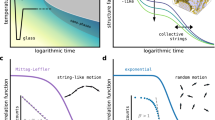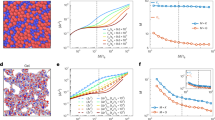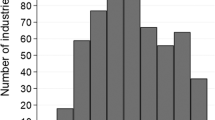Abstract
WHEN measuring the electrical breakdown strength of lead glass sheets with 1-cm.-diam. sphere electrodes subjected to 0.1/1,500 µsec. voltage pulses it was found that the secondary effects, usually present when transformer oil or similar immersion media are used, could be eliminated by using low-conductivity water as the immersion medium. Under these conditions when the edge effects were suppressed it was observed that the breakdown took place after a time delay in the range of 10−7–10−4 sec. The distribution of these time delays was found to be random. The results fit the relationship:  where n is the number of observed time lags within any time t; n
0 is the total number of time lags observed; τ is a constant.
where n is the number of observed time lags within any time t; n
0 is the total number of time lags observed; τ is a constant.
Similar content being viewed by others
Article PDF
References
Cooper, R., and Grossart, D. T., Proc. Phys. Soc., B, 69, 1351 (1956).
Kawamura, H., Ohkura, H., and Kikuchi, T., J. Phys. Soc. Japan, 9, 541 (1959).
Kawamura, H. Onuki, and Ohkura, H., J. Phys. Soc. Japan, 8, 424 (1953).
Kawamura, H. Onuki, J. Phys. Soc. Japan, 8, 731 (1953).
Austen, A. E. W., and Whitehead, S., Proc. Roy. Soc., A, 176, 33 (1940).
Author information
Authors and Affiliations
Rights and permissions
About this article
Cite this article
AZAM, M., DICKINSON, H. Time-lags in the Intrinsic Electrical Breakdown of Glass. Nature 186, 146 (1960). https://doi.org/10.1038/186146a0
Issue date:
DOI: https://doi.org/10.1038/186146a0



